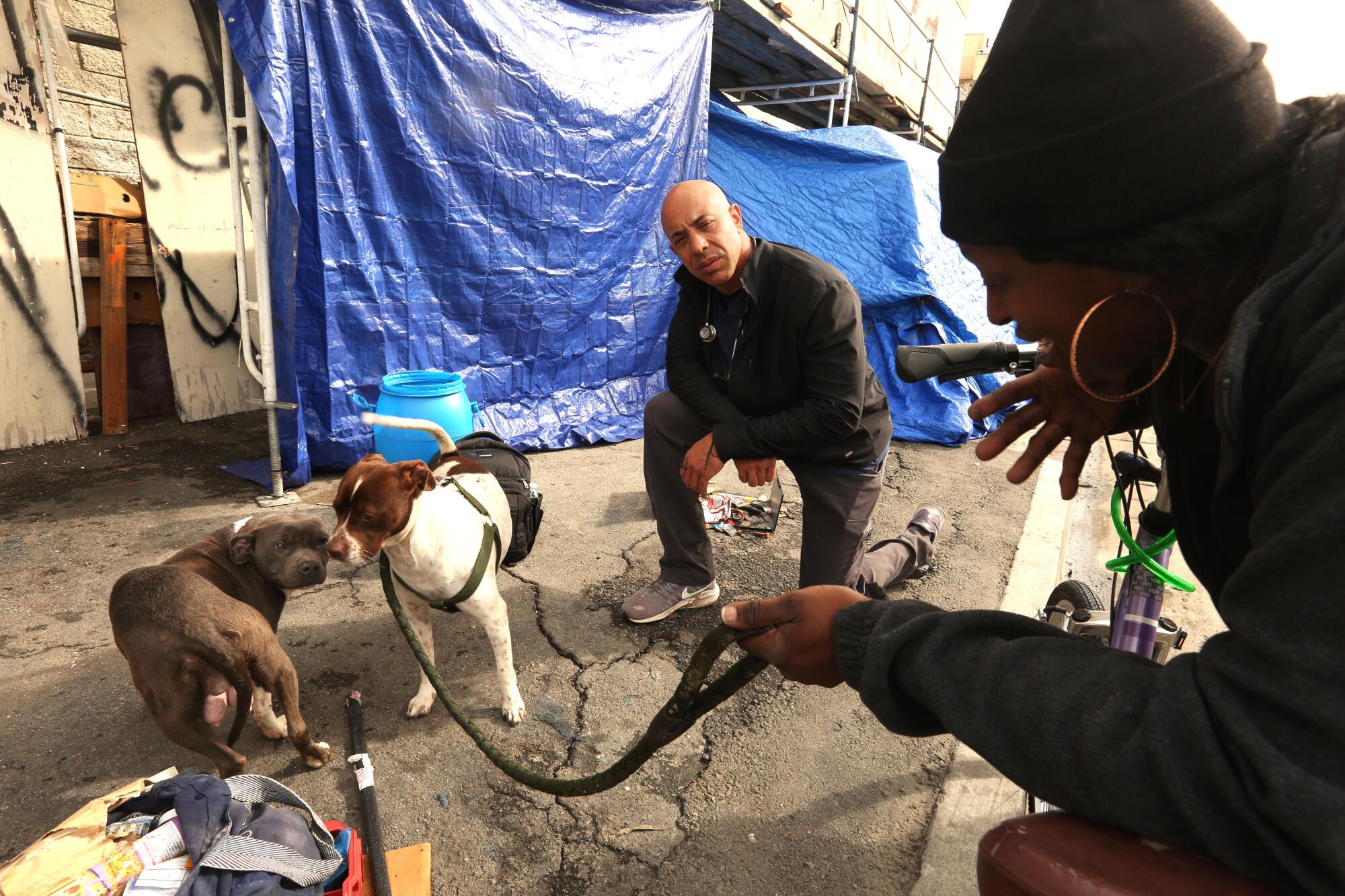
- Share via
Kilo, a muscular gray pit bull, stood staunchly by his homeless owner in the middle of 6th Street on L.A.’s skid row. His tongue lolled out, and his wide, square jaw was open as if he was grinning ear to ear.
“Is this your boy?” Dr. Kwane Stewart asked as he walked toward the pair.
Hector Abadin yanked on Kilo’s chain leash and turned to walk away without saying a word.
“I’m a veterinarian,” Stewart said. “I walk the area and find pets like yours and give free medical care.”
Abadin stopped. He’d been living on the street for the last year, and this was the first time he’d had a chance to get medical care for Kilo or his other four-legged companions. He looked down at the dog, then up at Stewart.
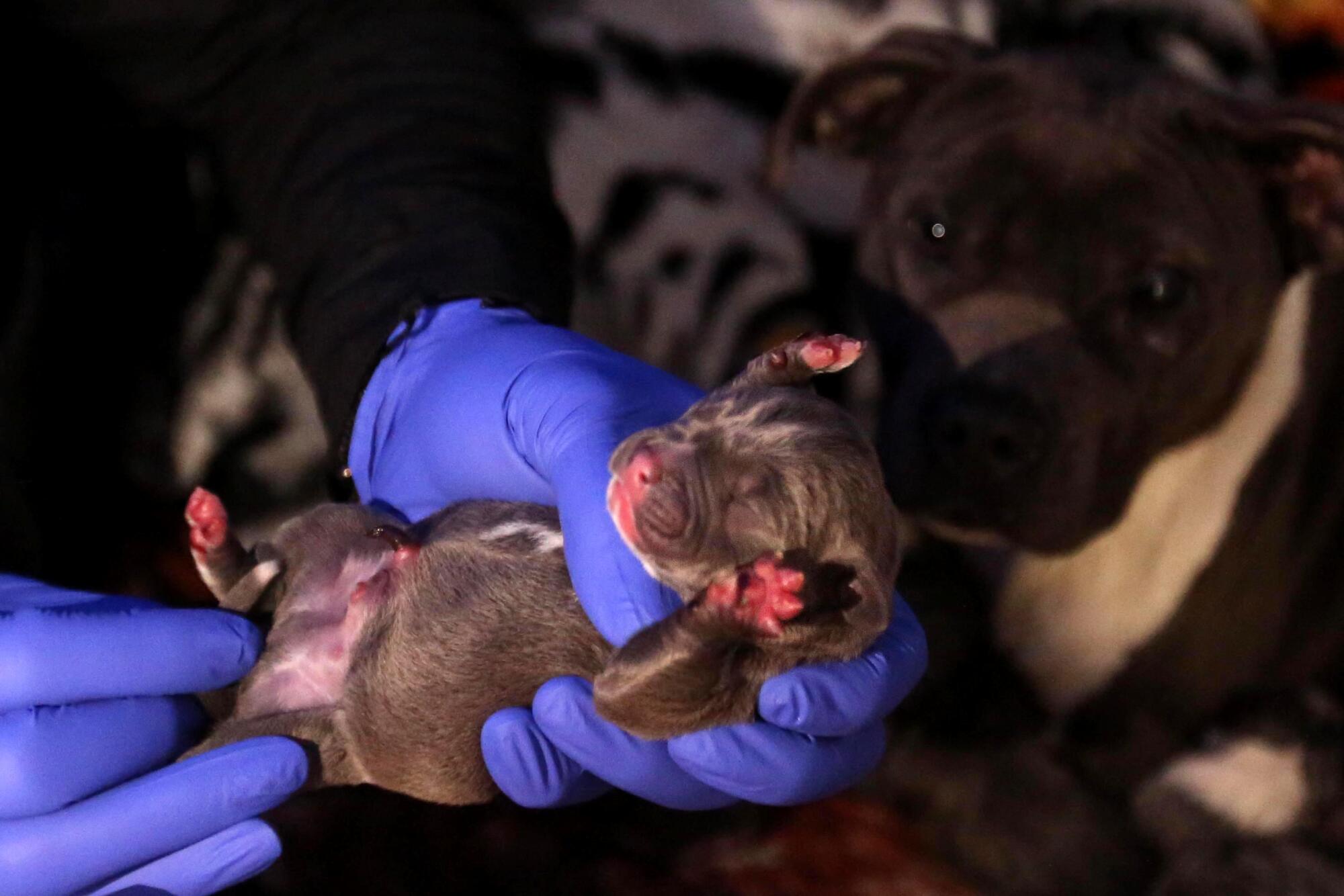
“I have his girlfriend at home,” he said in Spanish, pointing to Kilo. “She had puppies today. Come!”
For 12 years, exchanges like this have made up much of Stewart’s free time. About twice a month, the San Diego veterinarian makes his way to homeless encampments in San Diego, Orange and Los Angeles counties, looking to provide free medical care to the pets of unhoused people. He comes ready with medicines, vaccines, syringes and treats, offering to see the dogs and cats there on the street.
He’s treated pets for extreme flea infestation, worms and, sometimes, broken bones. He’s answered homeless owners’ questions on how to care for their animals with the limited resources they have, and he’s listened to their struggles and pride-filled stories about their furry friends. They know him as the “Street Vet.”
“These people out here who own pets, they’re looking for a normal life, they’re trying to get on their feet, they value companionship and they need it,” Stewart said. “There are some people out here who can educate you about being a pet parent.”
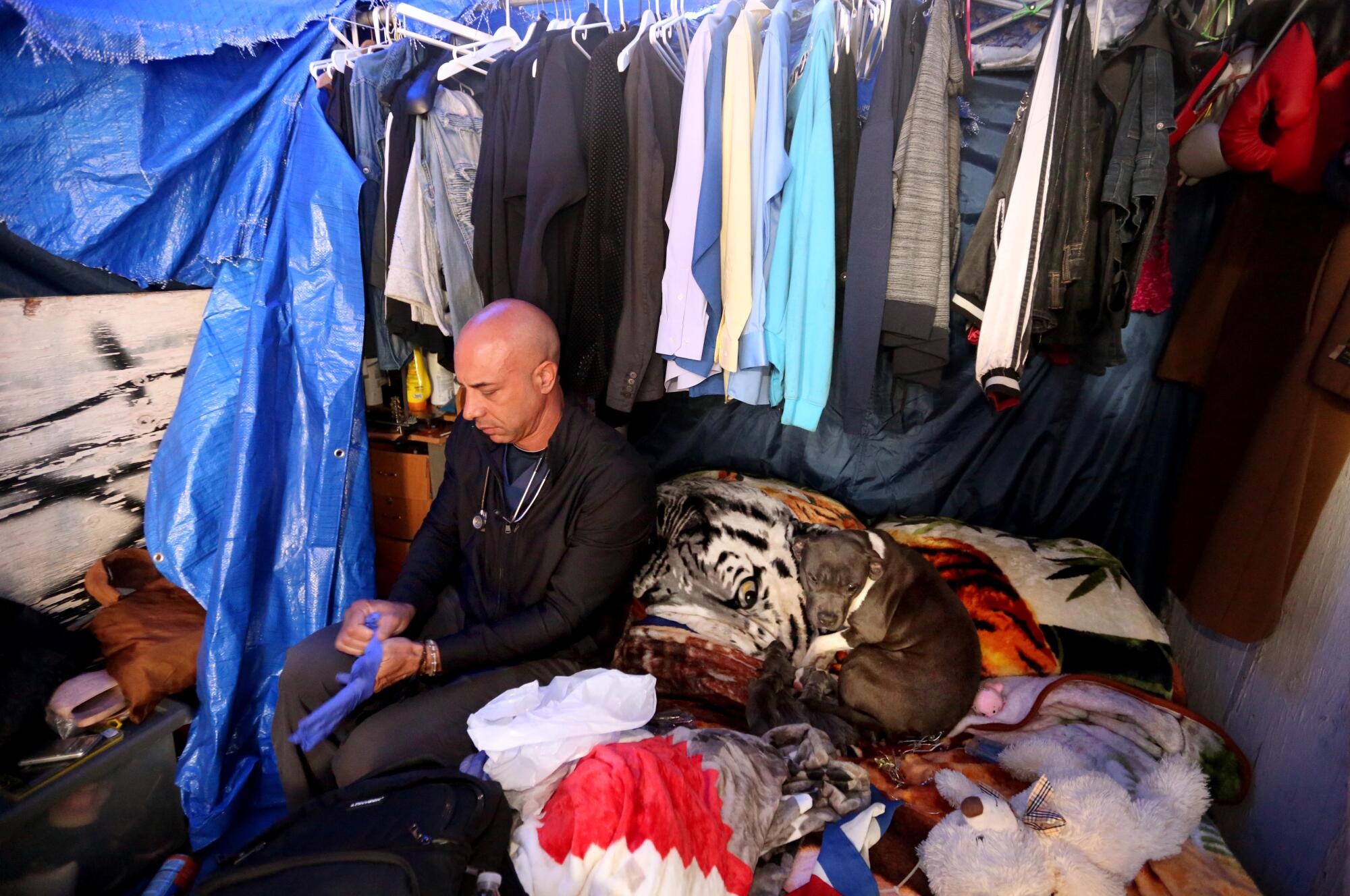
It’s a challenging task, Stewart admits, but a rewarding one. That’s why he has continued to make his way under freeway bridges, into tents on the sidewalks and into homeless encampments, looking for anyone with a pet. And it takes no time at all for him to find them.
Studies estimate that, across the country, from 5% to 10% of the homeless population own pets. One study, by professors and researchers at USC and UC Riverside, found that about 12% of unsheltered people in Los Angeles County in 2019 were pet owners.
The study also found that close to half of those owners were denied shelter services because they refused to give up their pets. Pet ownership, however, was associated with decreased loneliness and improved mental health among homeless owners.
Like many of their owners, these animals on the street are often ignored by public agencies and residents. At one point, Stewart also turned a blind eye, he said, but treating them would become his passion.

After graduating from Colorado State University in 1997, Stewart bounced around, working at pet clinics and animal shelters across California until landing in Stanislaus County in 2007.
Stewart had dreamed of being a veterinarian since he was 7, but that dream clashed with reality when he started to work at a county animal shelter. It was a source of steady income, which he needed. Veterinary school can cost an average of $200,000 to $275,000, according to the Veterinary Information Network Foundation, a nonprofit that assists veterinary students with college debt. Stewart was paying off tens of thousands of dollars in debt. But he struggled with the work required of him at the shelter.
Stewart remembers owner after owner dropping off their dog or cat, keeping the county shelter constantly crowded with unwanted pets. The recession from 2007 to 2009 only made things worse, with people unwilling or unable to take care of their pets. On some days, Stewart found himself euthanizing as many as 60 to 70 animals.
According to the American Society for the Prevention of Cruelty to Animals, about 920,000 animals are euthanized in U.S. shelters every year. One group, Best Friends, which advocates for no-kill shelters, says more than 100,000 animals were believed to have been euthanized in California in 2019.
“These people out here who own pets, they’re looking for a normal life, they’re trying to get on their feet, they value companionship and they need it. There are some people out here who can educate you about being a pet parent.”
— Kwane Stewart, “the Street Vet”
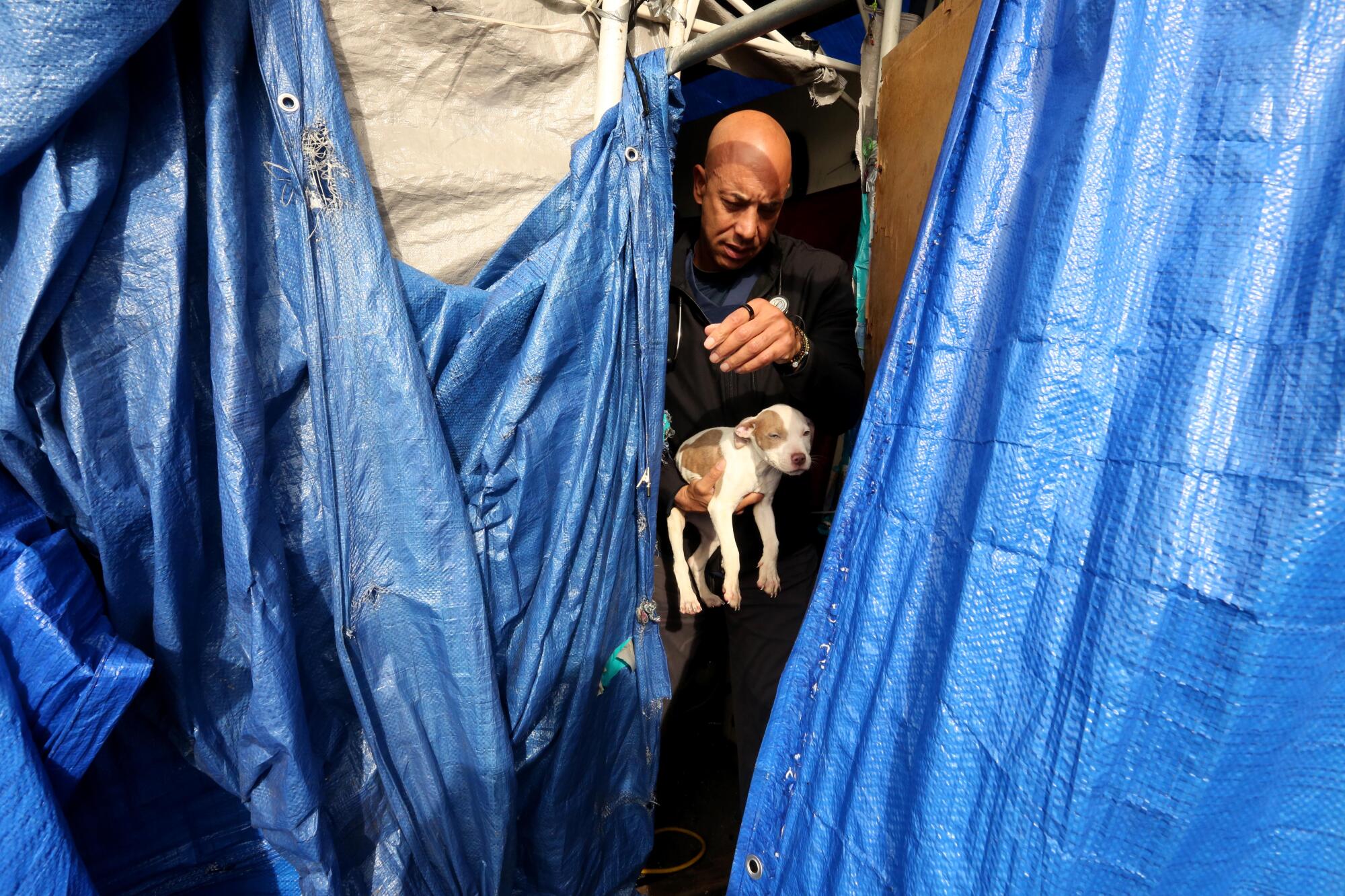
The job, Stewart said, left him depressed and questioning his choice of career.
Then, in 2010, Stewart walked into a 7-Eleven for coffee before work and, in a departure from his usual routine, made eye contact with a homeless man who sat outside the store with his dog, who appeared to be ill.
“This dog looked like a burn victim,” he said.
Stewart stopped and asked if he could check out the animal, whose hair was falling out, his skin covered with bumps.
Stewart returned the next day with medication to treat an acute flea infestation.
“It was five minutes of my time and $3 out of my pocket,” he said. “I helped that guy, and then all of a sudden I started taking notice of all the homeless people with pets.”
Weeks later, with the help of his son and girlfriend, Stewart organized a pop-up clinic next door to a soup kitchen in Stockton. The three walked up and down the line looking for pet owners and offering them free care.

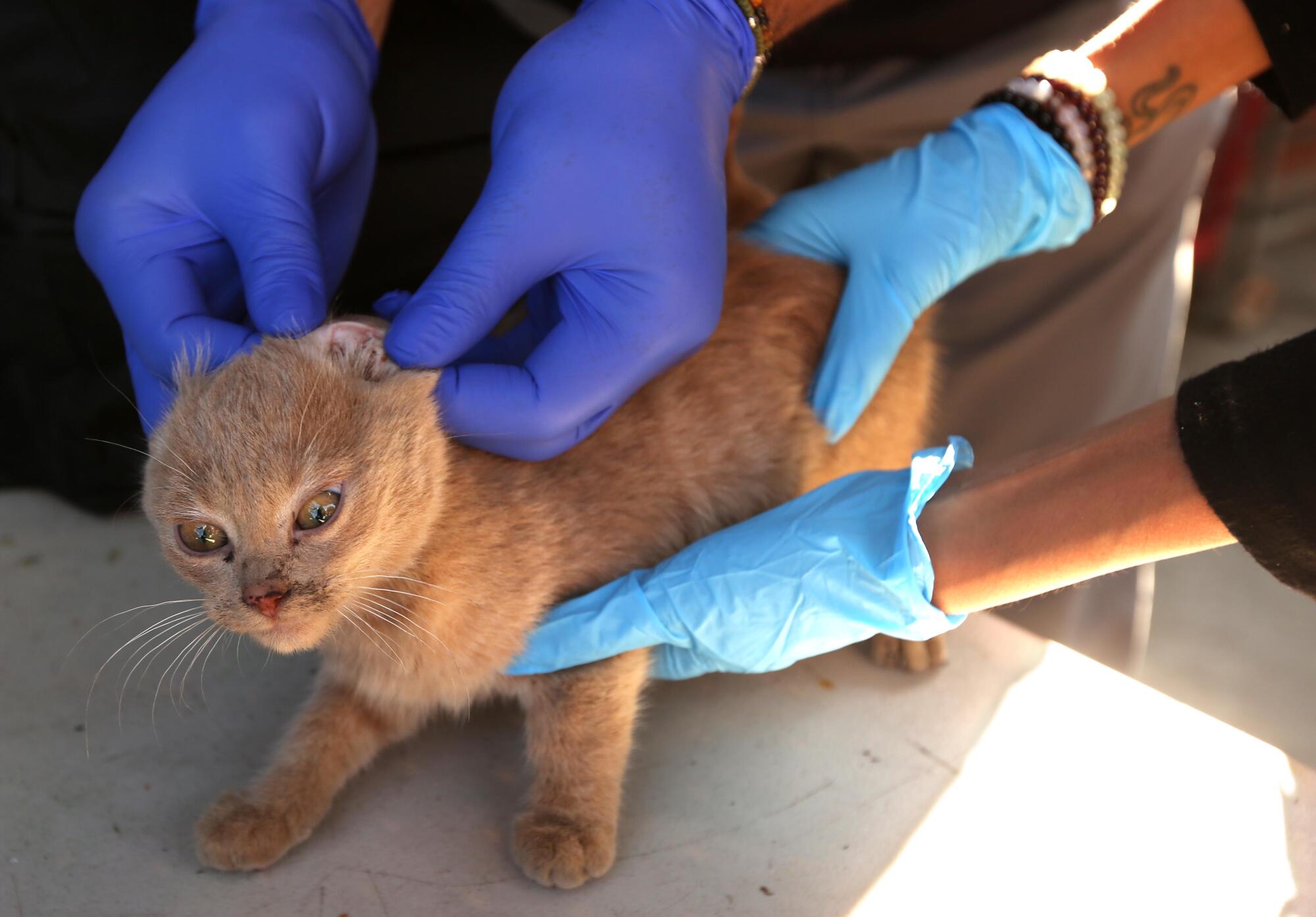
What Stewart didn’t mention to his family, however, was that after the pop-up clinic, he continued to go out on his own, looking for street pets. Sometimes he’d venture out before work, during his lunch hour or during his free time.
“I started packing a bag and said, ‘I’m just going to take the care to them,’ ” he said.
The cost for any medications for the animals was coming out of his own pocket.
“I did this in secrecy for seven years,” he said.
He doesn’t know why he kept it to himself, Stewart said. Perhaps he was worried that friends and relatives would question why he was donating his time and money so freely, or that they’d try to persuade him to stop or slow down, or that he’d be faced with unwanted opinions.
“Maybe I was afraid someone would judge, you know, or say something like, ‘Why do you spend the money,’ or ‘They’re homeless, they don’t deserve a pet,’ ” he said. “I didn’t want any of the questions. I just wanted to do it. It was my own little thing. It was my crusade.”
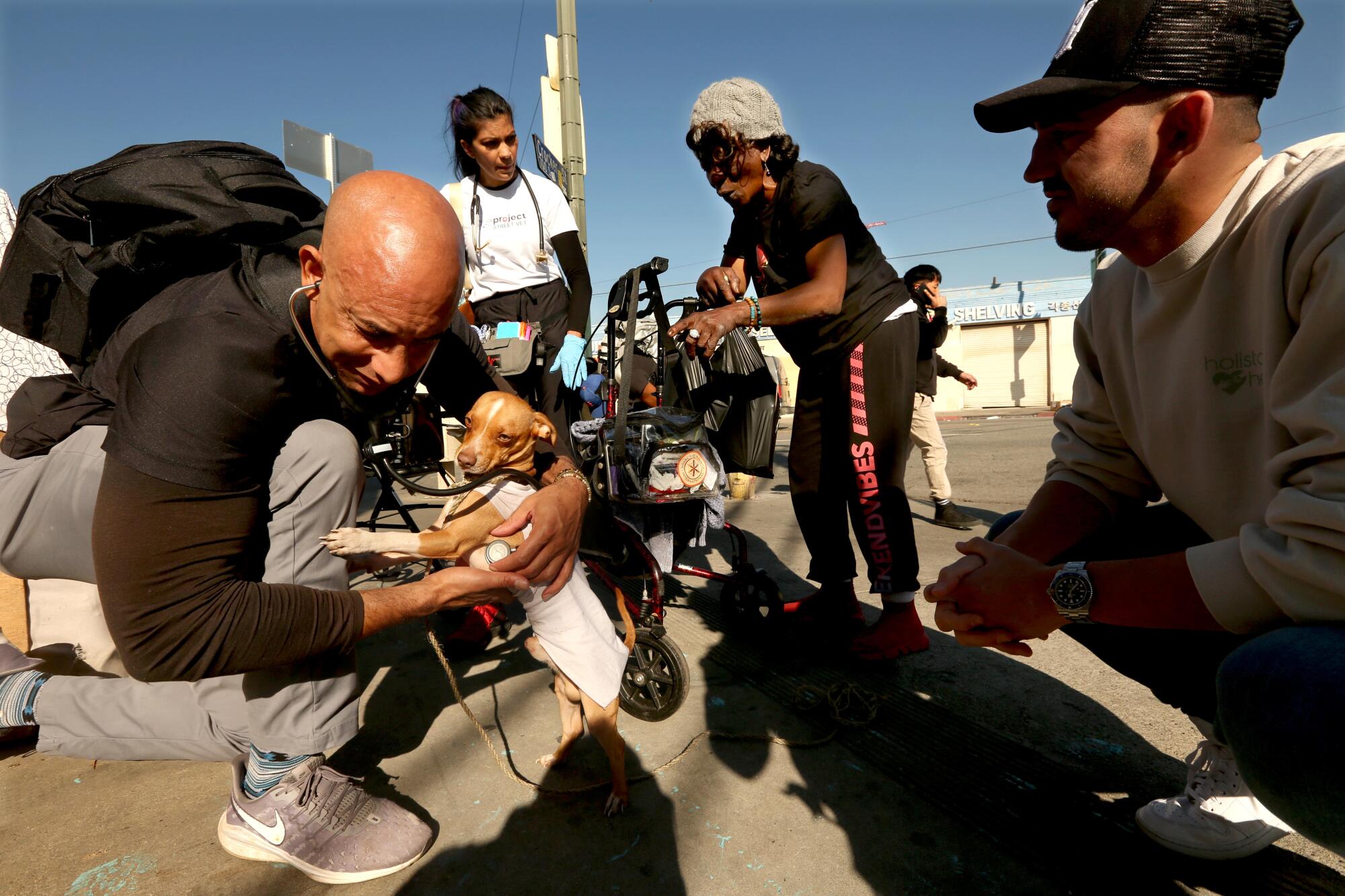
By 2012, Stewart had moved to Studio City to become director of American Humane’s No Animals Were Harmed program. Stewart helped draft requirements enabling companies to state that no animals were harmed in filming, and he monitored that animals in films and TV shows were being safely handled. Then in 2017, while talking off-set with a producer, Stewart mentioned his work with the pets of homeless people.
The producer told Stewart his work sounded like it could be the basis of a reality-TV show. When it seemed the project would come to fruition, he decided to tell his younger brother, Ian.
“It didn’t really come as a surprise to me,” Ian Stewart said. “We were raised by our mother as animal lovers and advocates. For him doing something like this, that wasn’t much of a surprise.”
The timing was perfect for the reality show, Stewart said. He’d found that he wasn’t recommending the expensive medical care that pets sometimes needed. Paying out of pocket was becoming a burden.
“It was starting to get exorbitant,” he said. “If I wanted to keep doing this, and care for all the pets I come across, I had to do something different.”
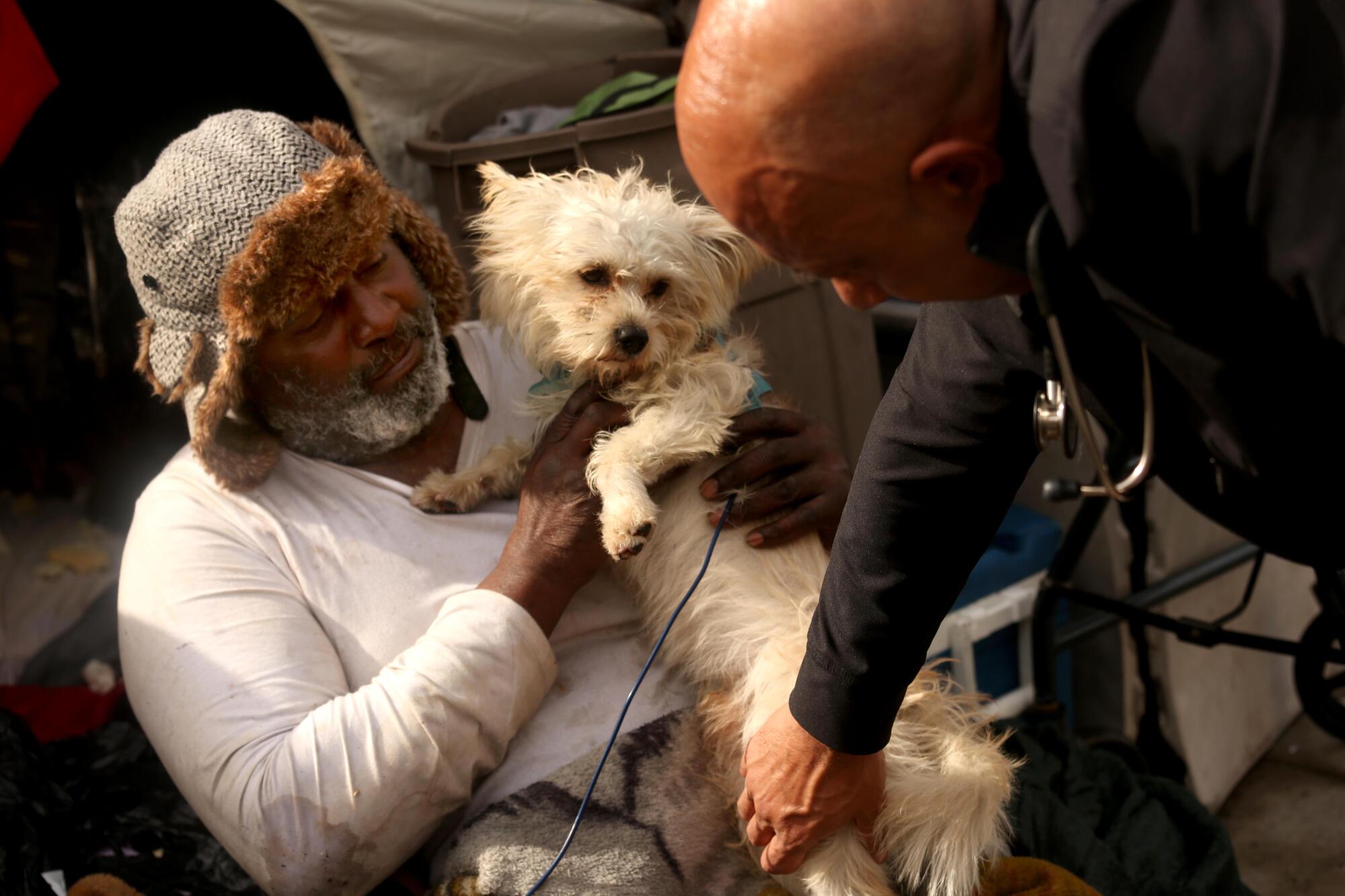
In 2019, 11 episodes of “Dr. Kwane: The Street Vet” aired on Canada’s Cottage TV. The series, produced by Two Sons Productions and Blizzard Road Productions, showed Stewart visiting homeless encampments across the U.S., offering free medical care, training and medicine for pets. Production of the show ended after the one season, but episodes are still available online.
As a result of the show, Stewart’s social media following rocketed, and pet product companies reached out, looking to partner with him.
In 2020, the Stewart brothers started Project Street Vet, a nonprofit charity that provides free veterinary care to the pets of anyone vulnerable to homelessness.
Ian has since become the head of the foundation and manages his brother’s social media accounts, documenting his work. He worked as executive producer of the show and has since been covering the stories of Stewart’s patients on social media.
“It’s been humbling and eye-opening,” Ian said. “Sometimes we have our own perceived judgments of people and folks.”
At times, comments on social media are critical of the pets’ homeless owners, Ian said, and ask why someone who is struggling to care for themself is taking on a pet.
“What I learned after going out all these years with Kwane is these pets are loved as much or more as [those of] housed folks,” Ian said. “I’ve seen it firsthand, that some of them will go [without food] for a night so their pet can eat, or travel long distances so their pet can get care.”
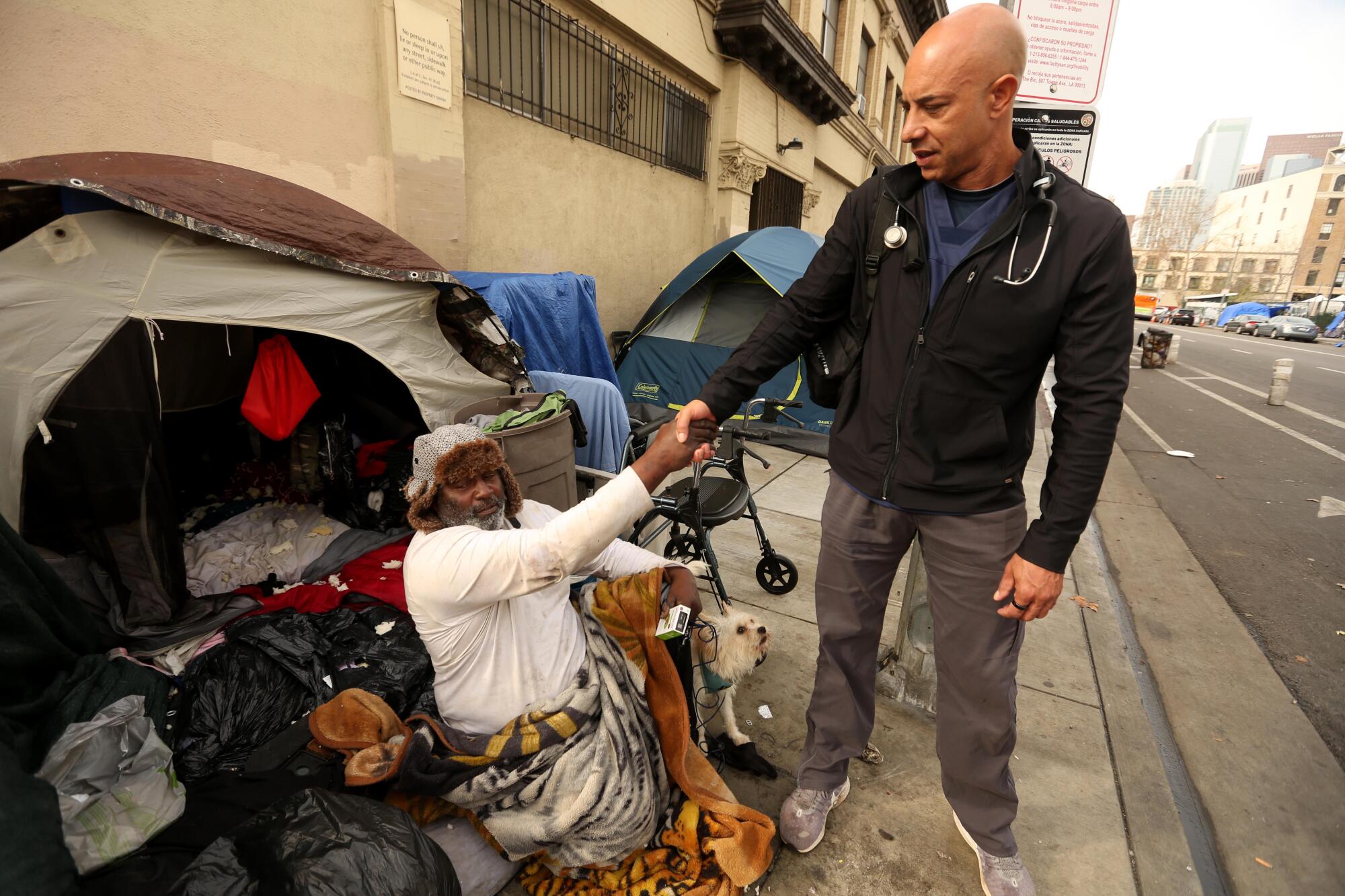
Project Street Vet has also partnered with companies that make pet products, which has helped the foundation expand to Atlanta, Washington, D.C., and Orlando, Fla. Now, as part of the foundation, groups of volunteers head out into the streets across the country to offer the same kind of help Stewart provided while on his one-man mission, he said.
On Wednesday, Stewart followed Abadin past dozens of tents on skid row in Los Angeles. He pulled back the blue tarp of Abadin’s tent.
Inside was another gray pit bull, Movie, nursing six newborn pups on a mattress. Abadin took her in a couple of months back, he said, from a young guy who was addicted to drugs and told him he couldn’t care for her anymore.
He also took in another pit bull, a month-old white-and-brown pup, after her owner told him he couldn’t care for her.
“I felt sorry for her,” Abadin said about the dog. “I saw her and she seemed too thin.”
The new pit bull mother and the pups were healthy, Stewart said, but the white-and-brown pup seemed to have worms, which kept her from gaining weight.
Stewart gave the pup a vaccine and promised he’d be back in two weeks with a second vaccine dose and medicine.
“God bless you!” Abadin told Stewart.
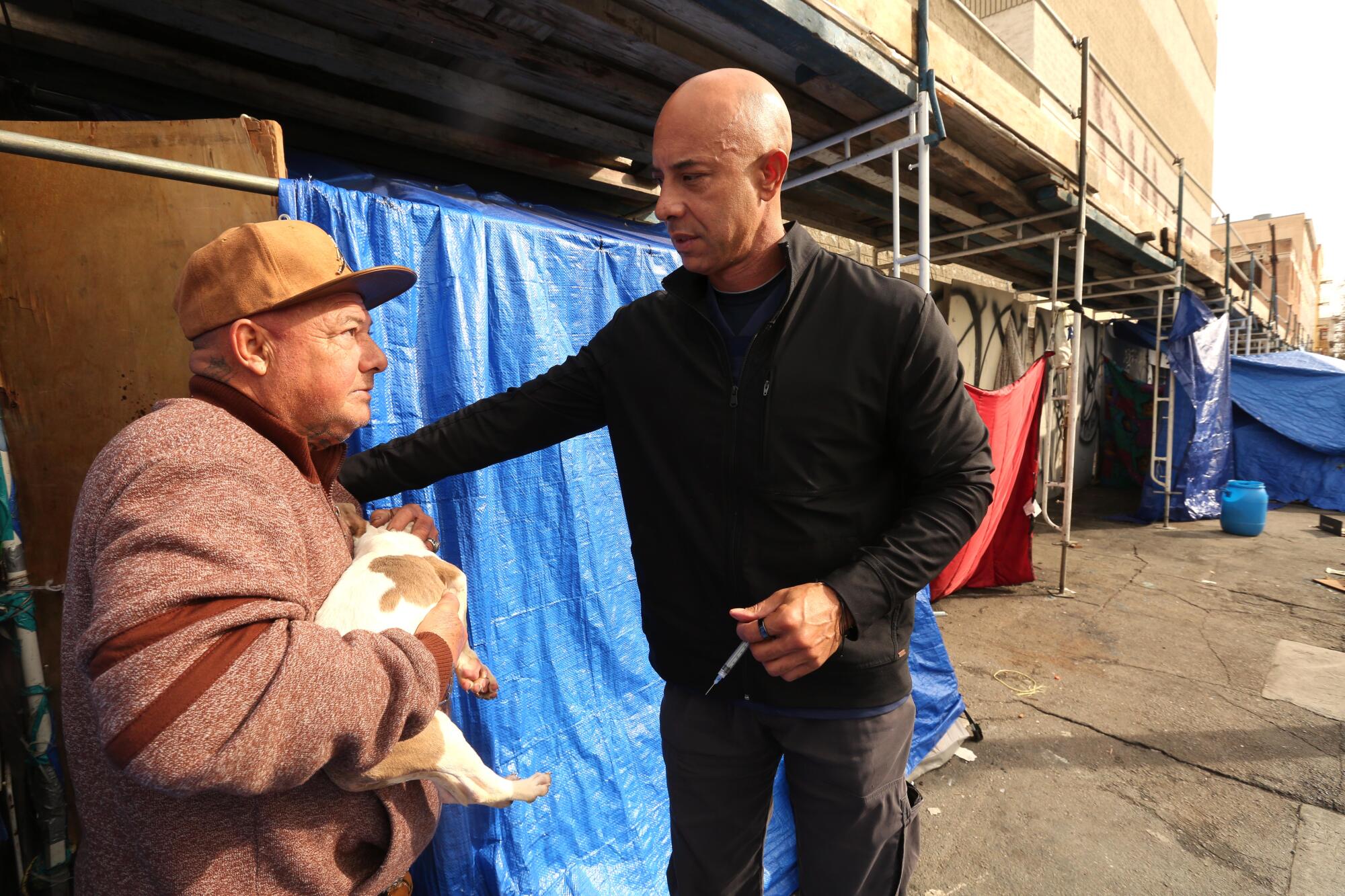
The 58-year-old has been on the streets for years after his mother was hospitalized for mental illness and his father died, he said. He was released from prison a year ago, he said, but it’s difficult for him to get settled in a home because of his “nerves.”
His dogs, however, keep him centered, Abadin said.
“It’s a bit hard, but they help me,” he said. “I love dogs, I just love being around them.”
It doesn’t take long before word gets out that Stewart is around.
“I got a dog!” said Christina, who’d noticed Stewart inspecting Abadin’s dog. In a few minutes, she had her dog, Pepper, in tow.
Near Crocker and 6th streets, Stewart ran into another woman living in a parked RV with her boyfriend and three dogs — a pit bull named Coco and two small black Chihuahua mixes, Chico and Chica.
Stewart quickly noticed Chico was dragging his back feet.
Owner Kimberly McPeters-Guzman said they had been in St. Louis over the holidays with her mother when they found an injured Chico emerging from an alley.
“Somebody beat him, we think,” she said, then showed Stewart pictures of X-rays taken of Chico. “We don’t know who or what.”
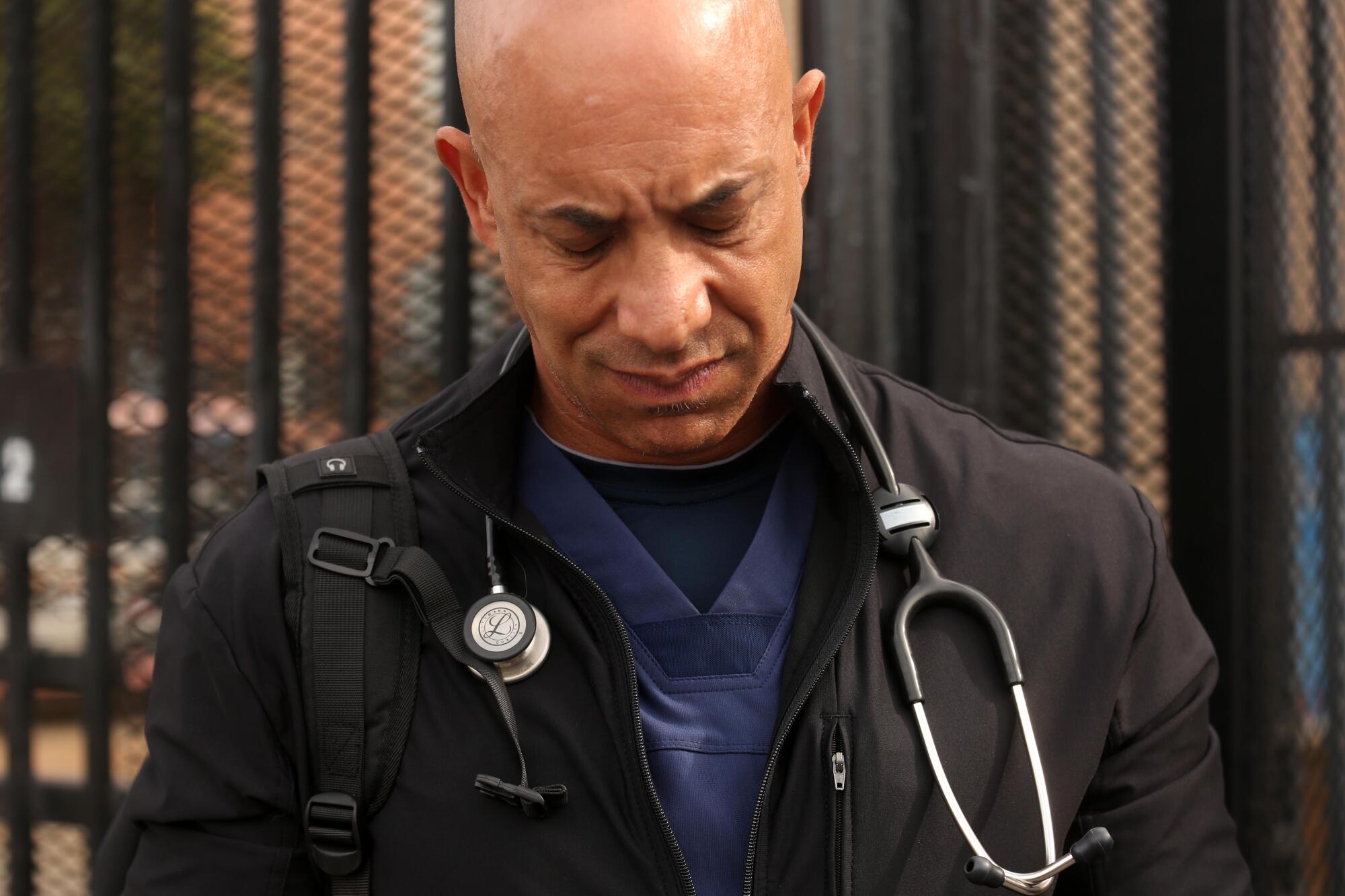
“Both of his femurs, his back legs, are broken,” Stewart said. “Yeah, this is bad.”
McPeters-Guzman said they’d tried to get Chico care, but the surgeries for the broken bones were about $7,500.
“He’s dealing with it, but I hate to see him like that,” she said, adding that, since they couldn’t afford the surgeries, she was looking for ways to keep paying for his pain medication.
“Those pain meds are expensive,” she said, “but we don’t care about, you know, we make a way to get the pain medicine.”
“I know he’s not acting like it, but he’s in a lot of pain,” Stewart said. “That’s as painful as it gets.”
“I know, but we can’t afford the surgery,” she said. “If we had the money, he’d definitely have it.”
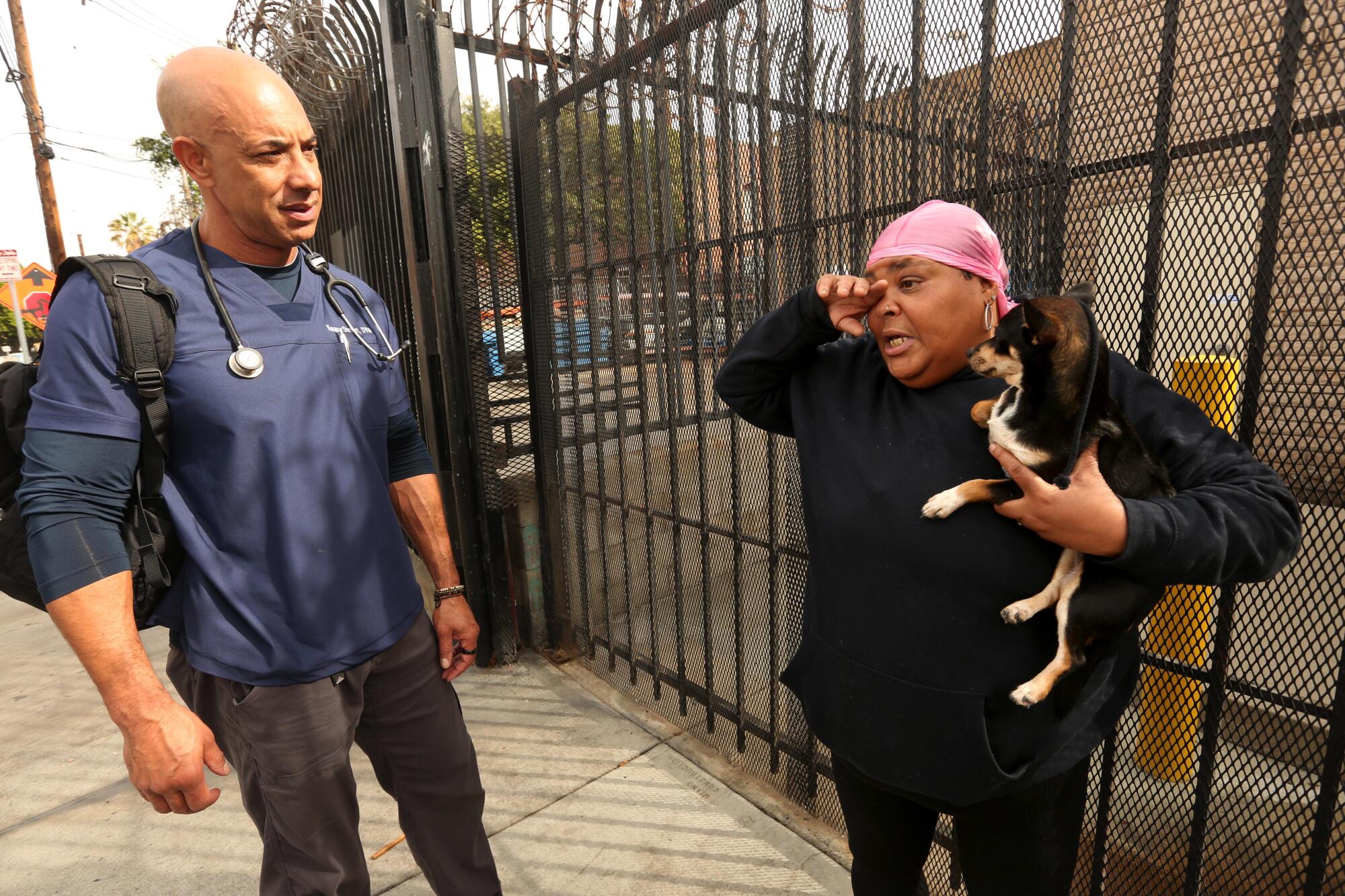
Stewart looked at the X-rays on McPeters-Guzman’s phone, then told her she needed to keep Chico from walking. He knows a surgeon who can get him a good rate, he said, and he’s going to reach out to make sure Chico gets the surgery.
If the bones are not yet beyond repair, he said, the foundation may be able to cover the costs.
“I’m glad I ran into you,” Stewart told her.
“I’m glad you ran into me, too!” she said.
More to Read
Sign up for Essential California
The most important California stories and recommendations in your inbox every morning.
You may occasionally receive promotional content from the Los Angeles Times.












